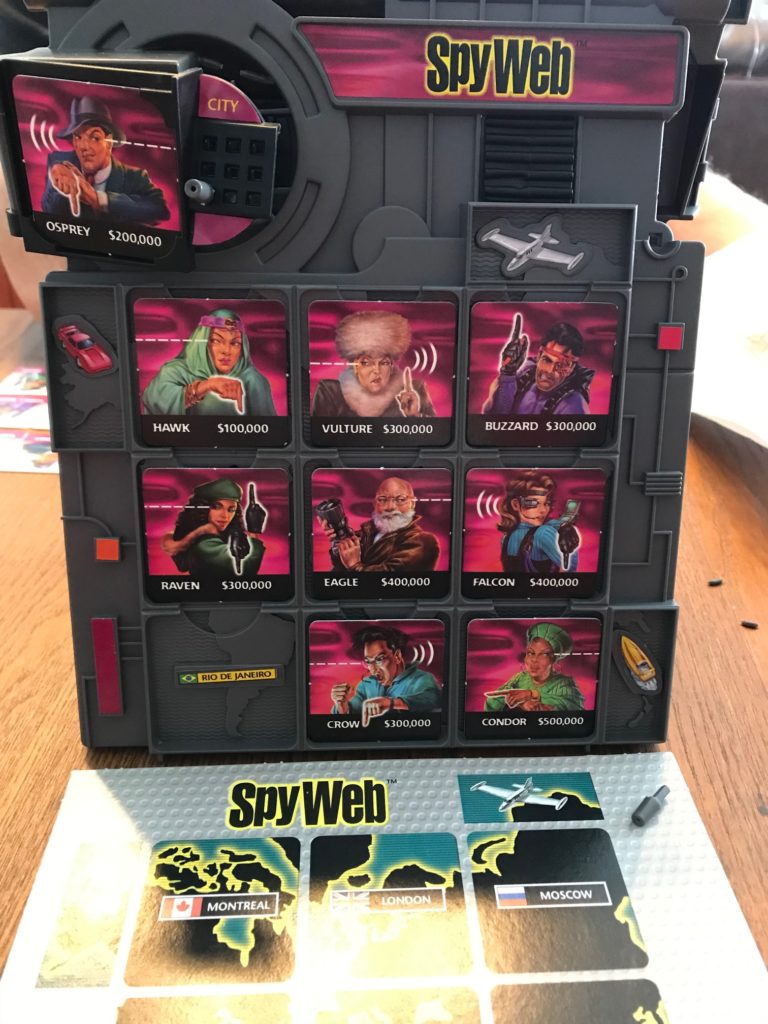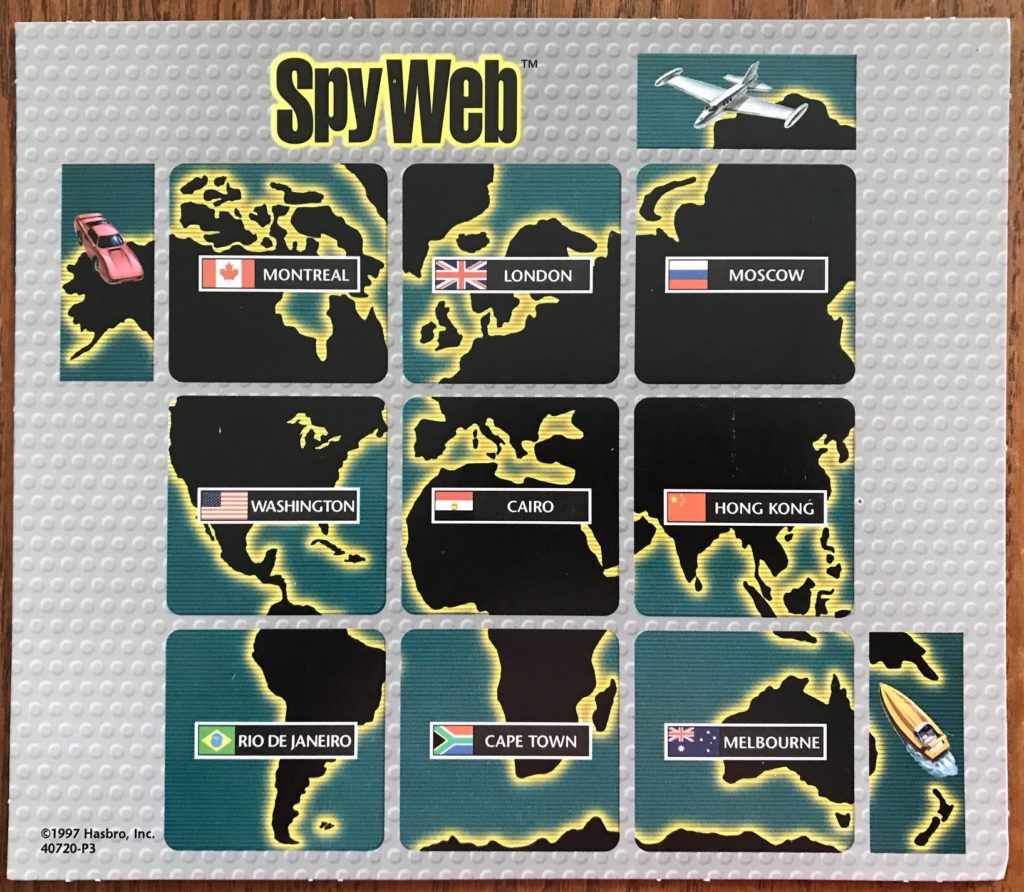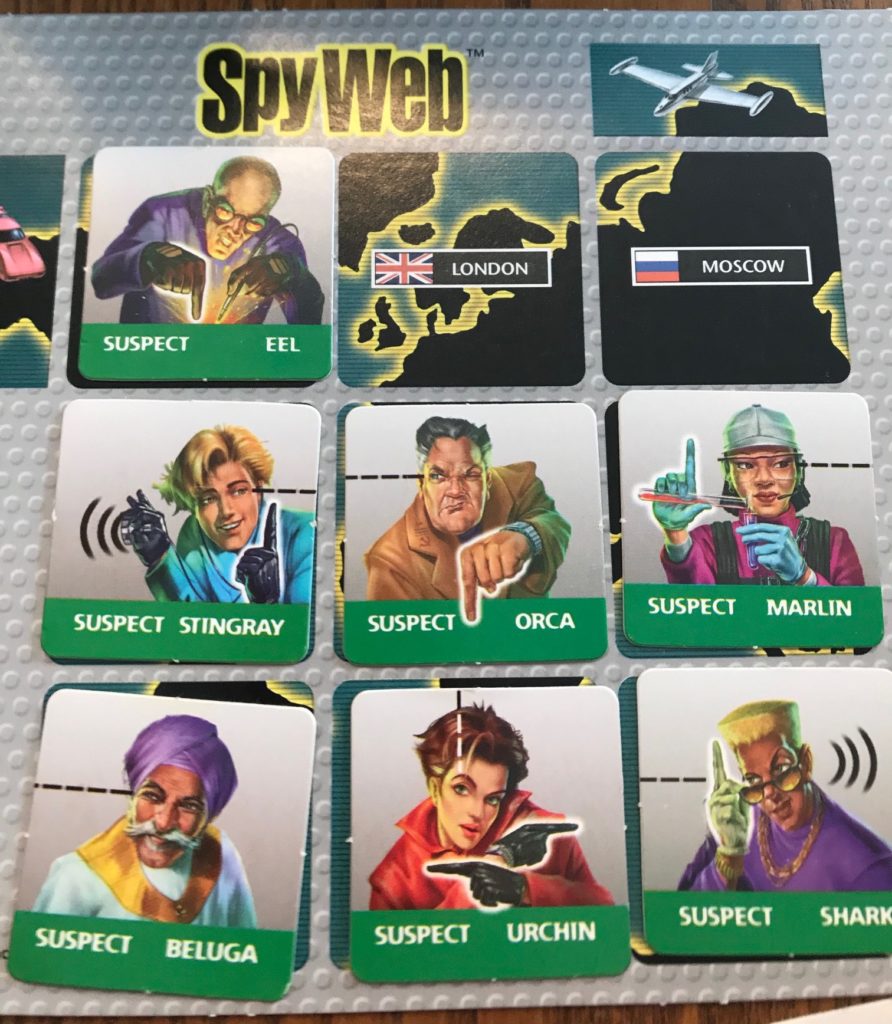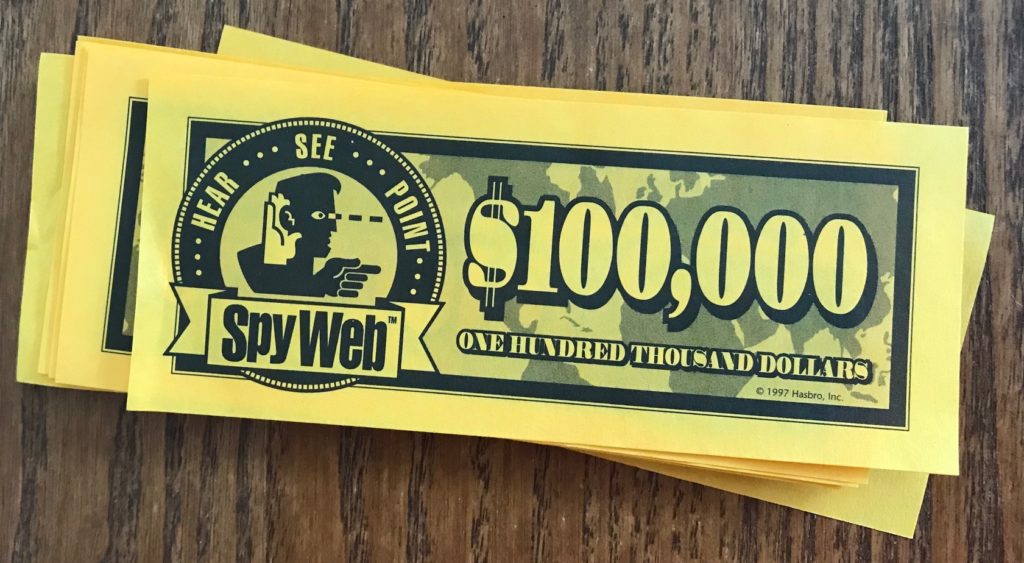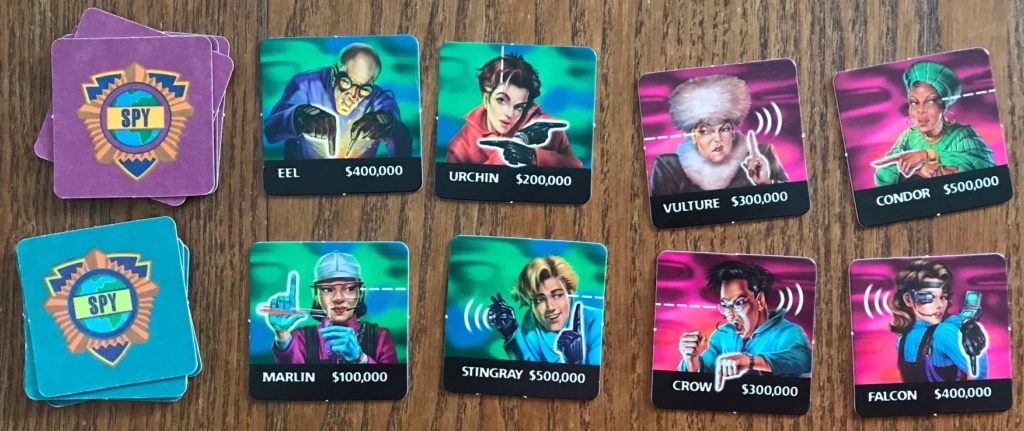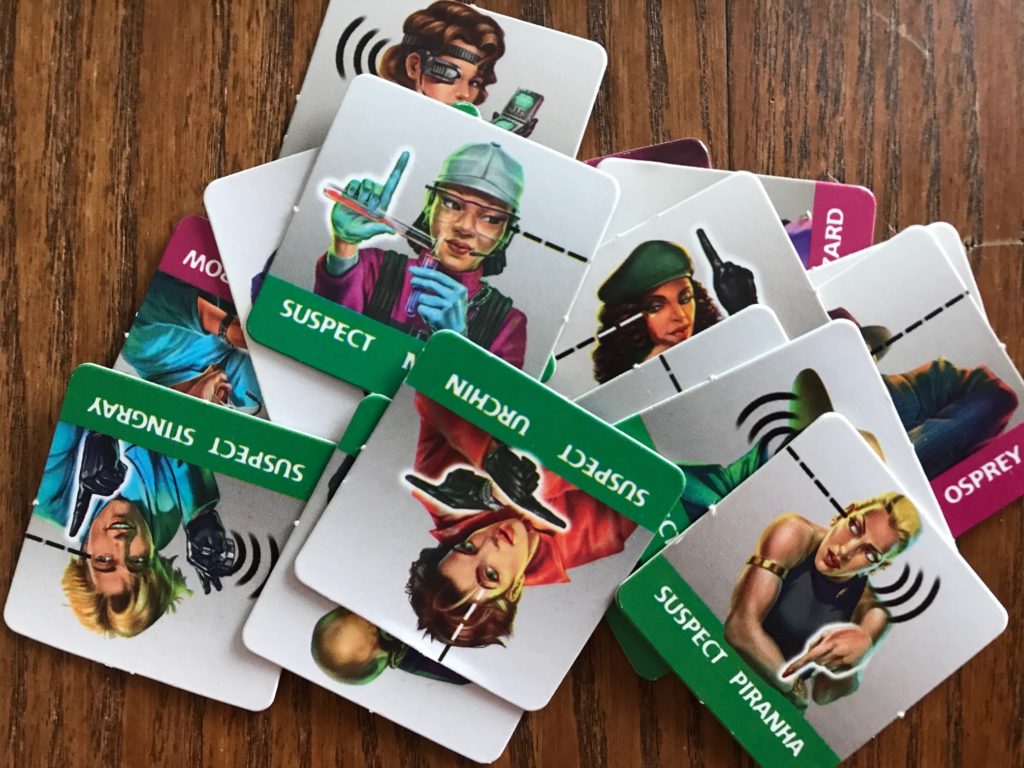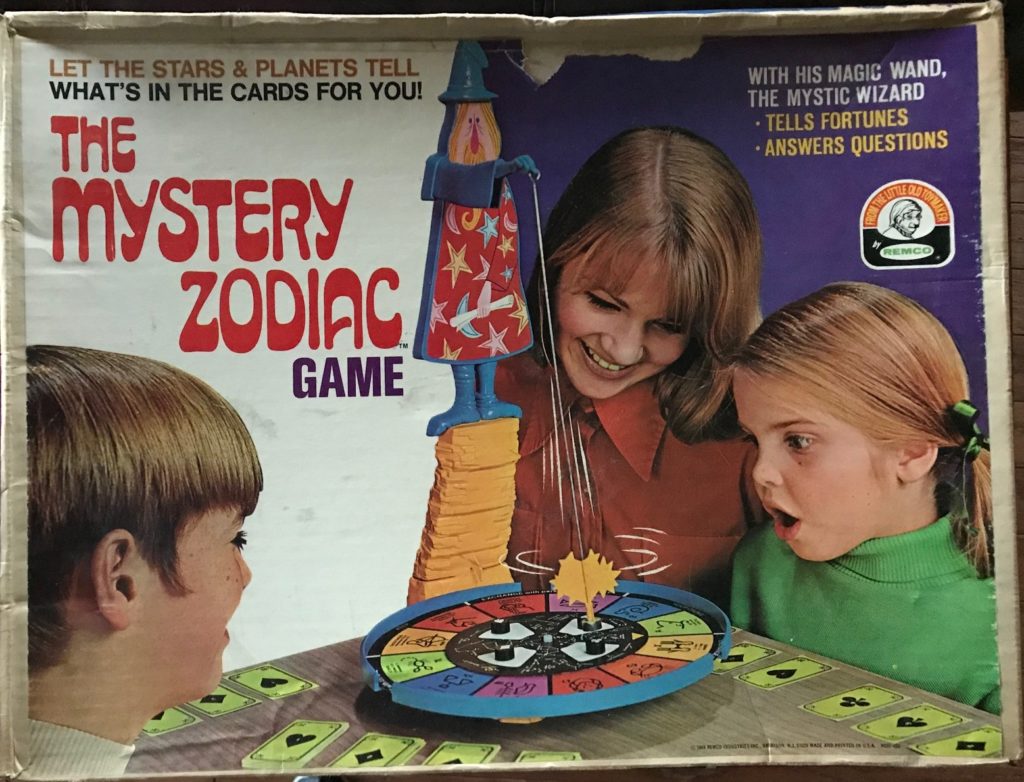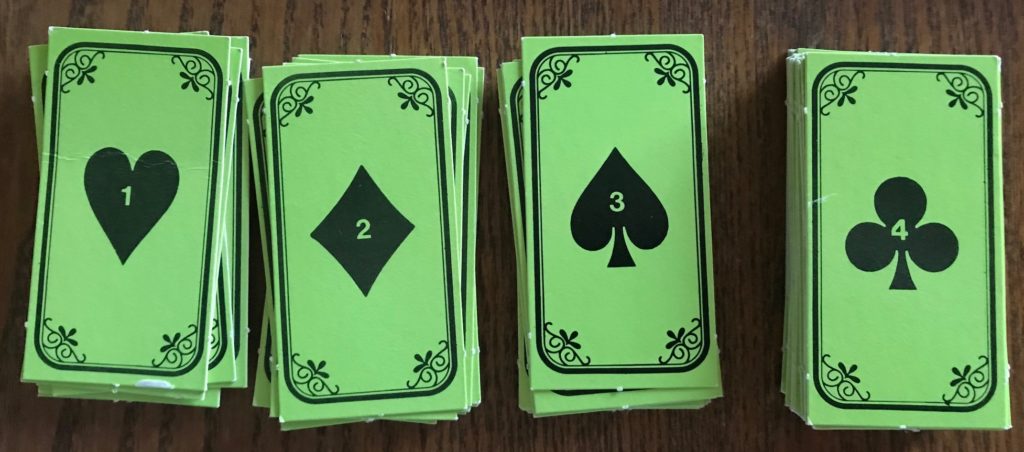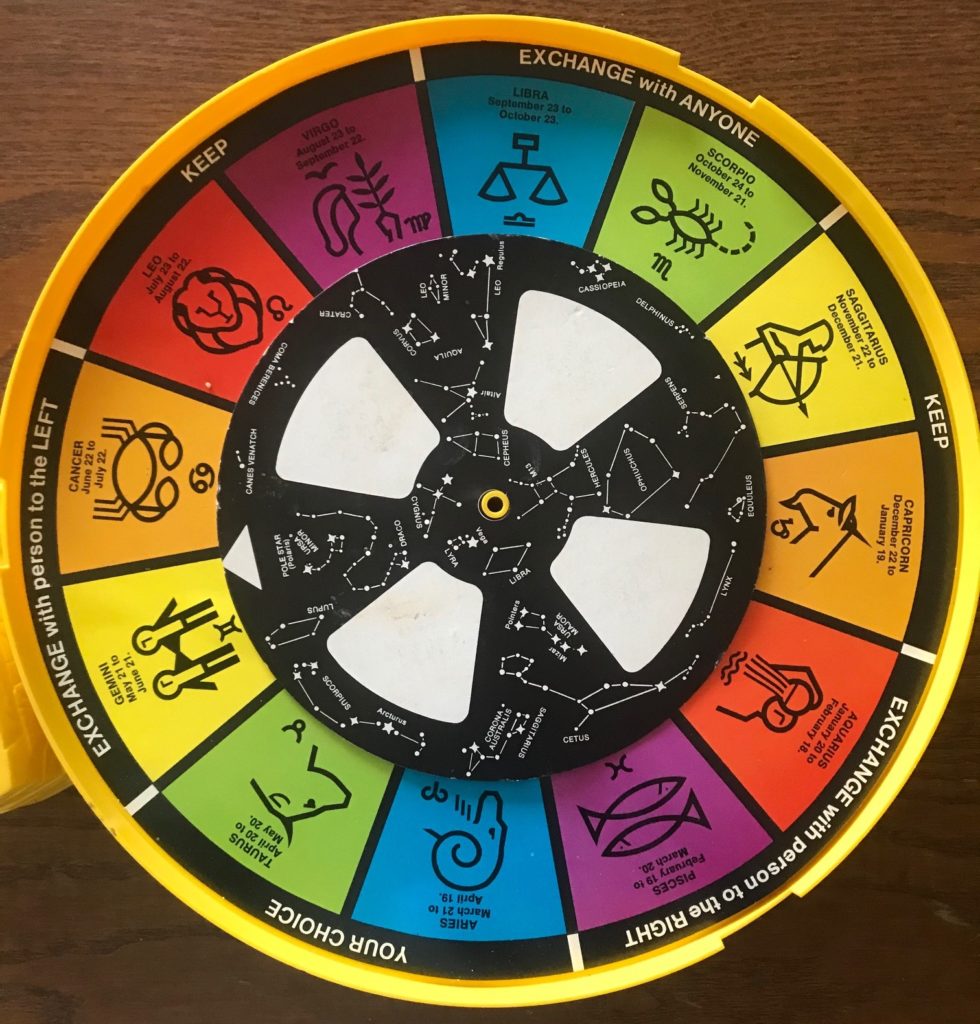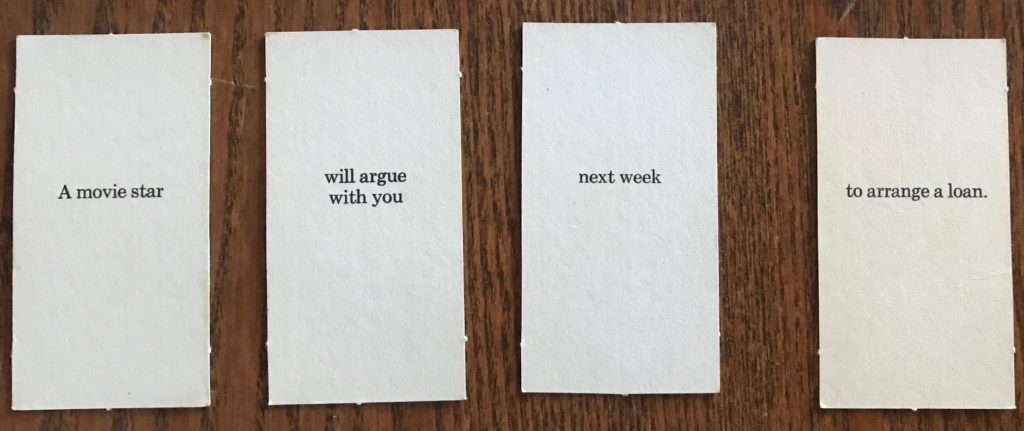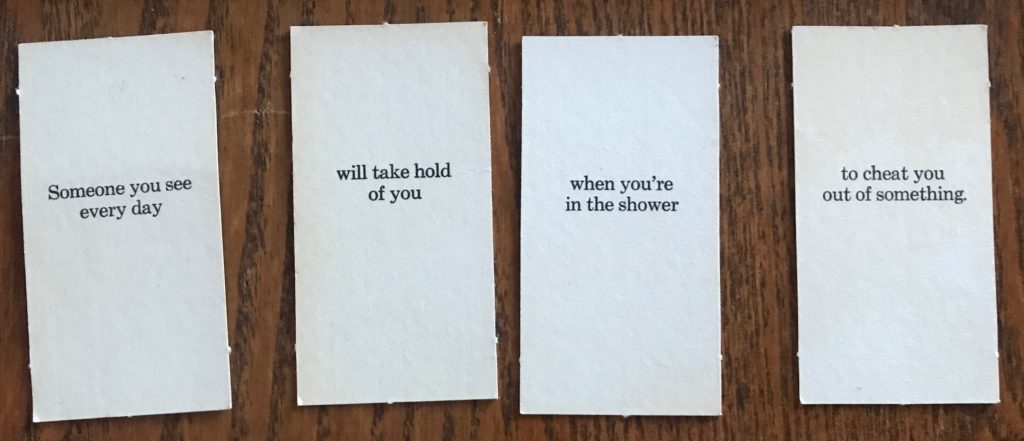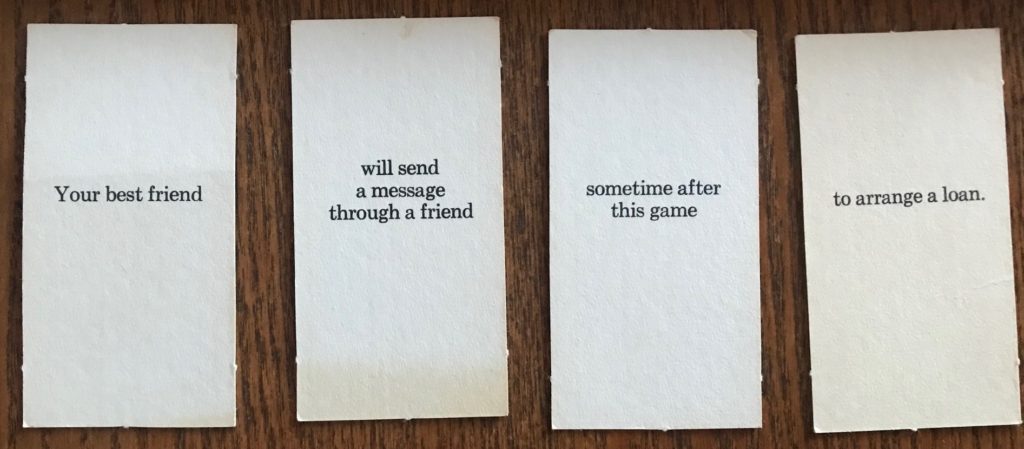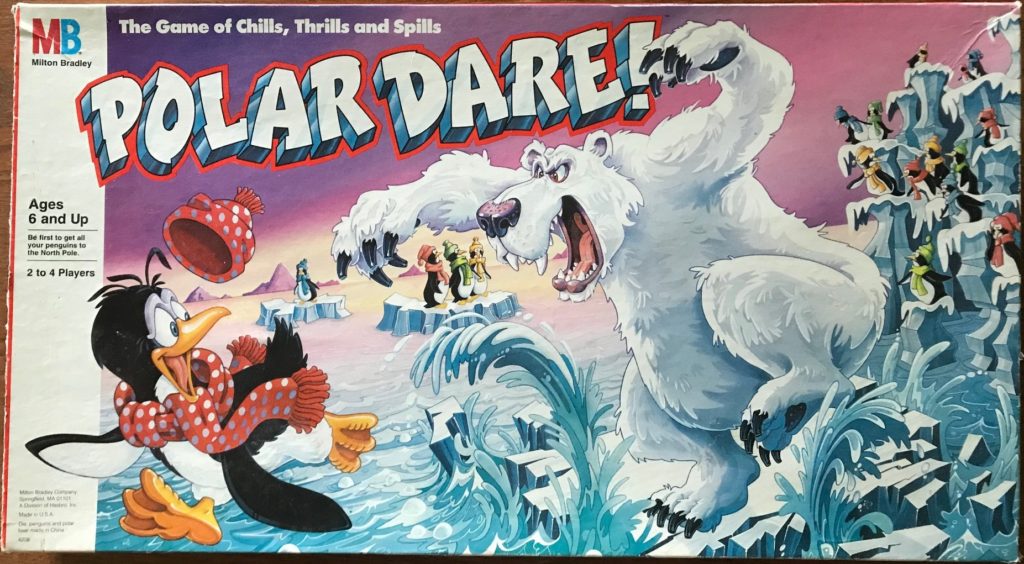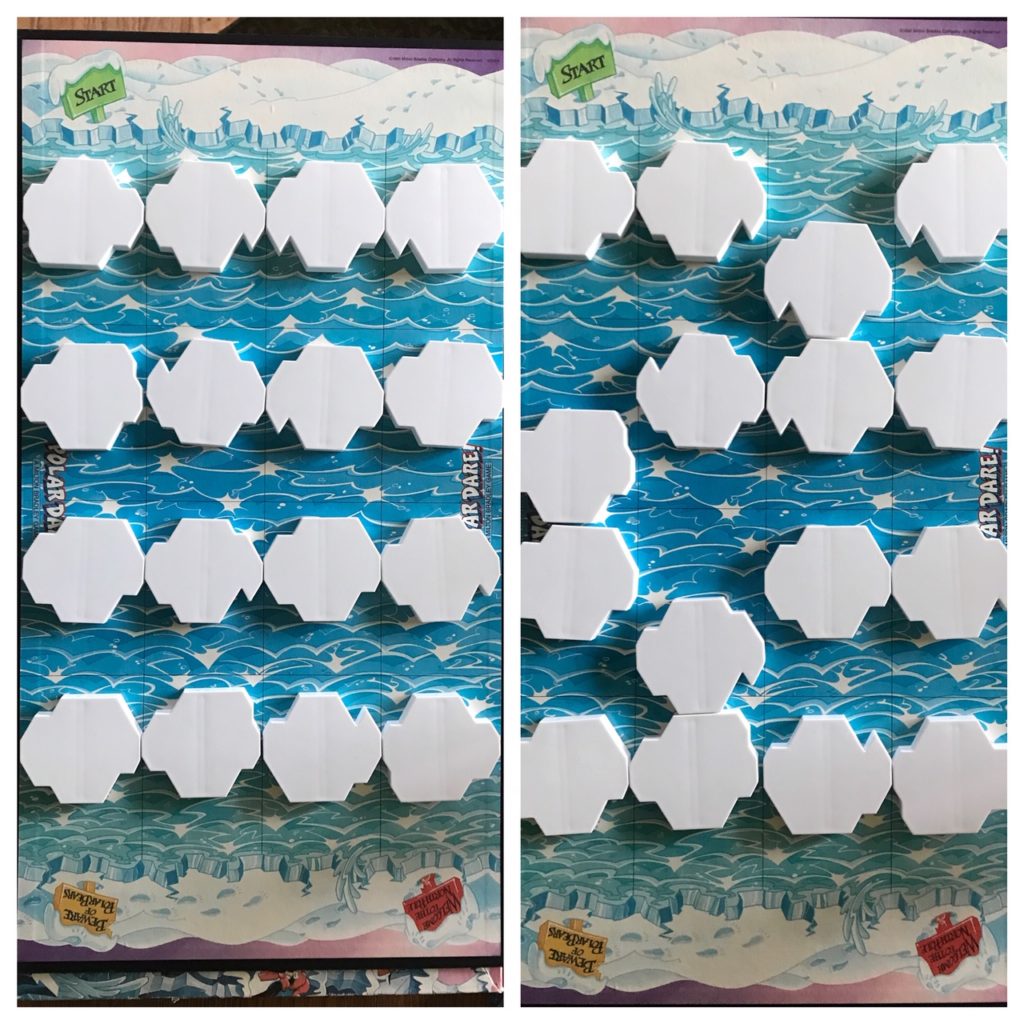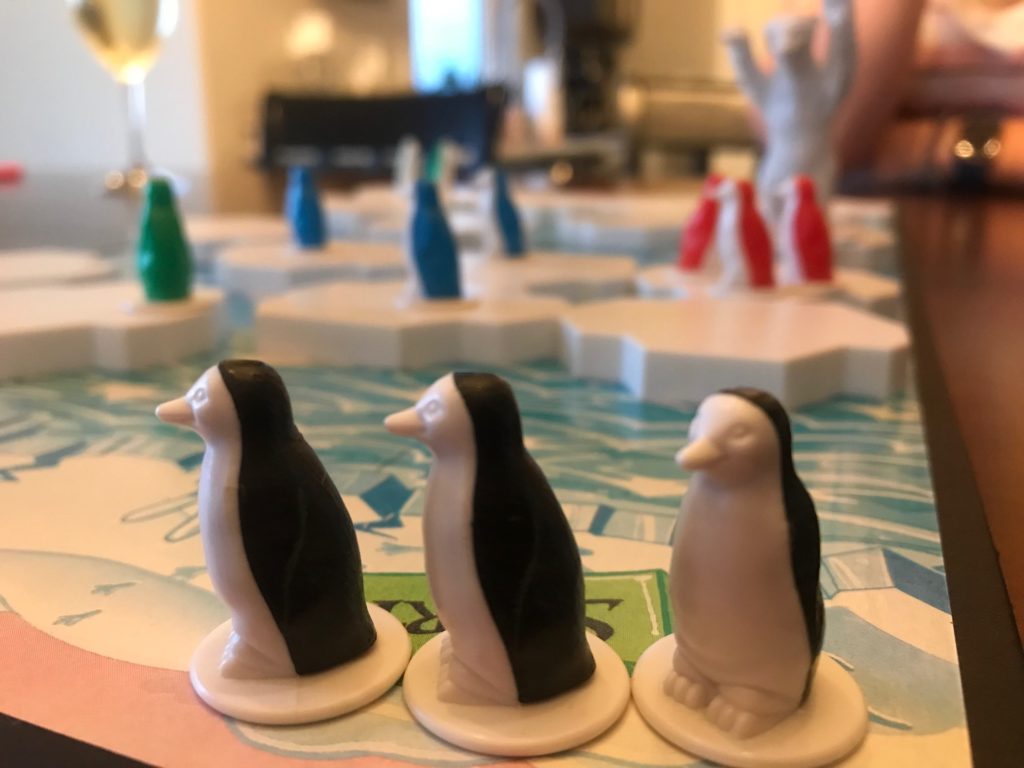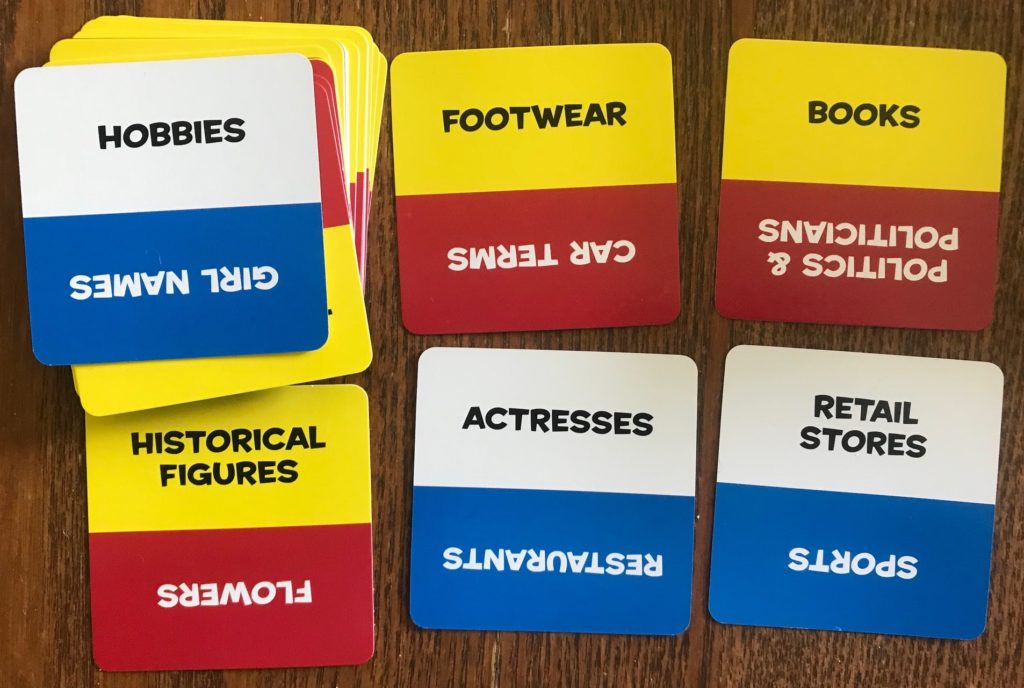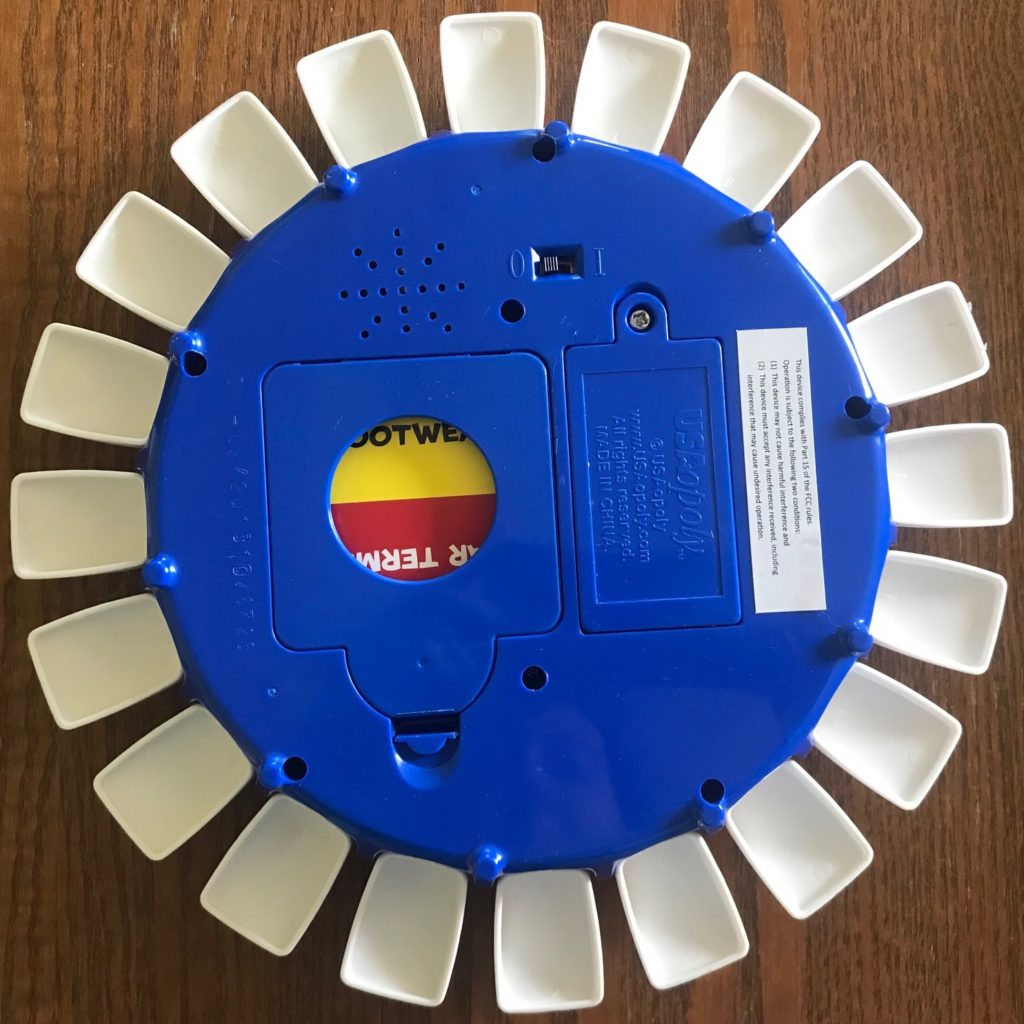Review: moods
Publisher: Hasbro
Year: 2000
Players: 3 to 8
Tagline: it’s all in the way you say it game.

how we met
I found moods at one of my normal haunts. Moods is one of those interesting thrift finds where the cover screams generic party game, but yet I have not seen it before. So what is it? Moods, what are you?
I picked it up and was holding onto it until I could look it up. If I am holding a game at thrift Bill often asks me if I have looked it up yet. The funny thing is, I only look them up on BGG and check out feedback. But he means eBay. Every time.
Both of our lookups netted enough interest to spend the couple of bucks and play moods.
how it plays
The object in moods is to be the first player to the Finish space. You get to move your pawn, called your Mood Stone, by correctly guessing the mood in which your fellow players say certain phrases.
To begin a round, take moods from the Mood Deck and place them face up along the board in the numbered spaces provided. Then the first player puts the 10-sided die into the cup and puts the cup upside down. Then they can peek at the die without showing any other players. The number on the die corresponds to the mood they must be this round.
Next this same player draws a card from the Phrase Deck. Read the phrase in the mood you were assigned by the die.

Next the other players bid on which mood the active player is by using their Voting Chips. Each player gets four voting chips numbered 1 through 4. You can only use one chip each round, so use a higher number if you feel very confident and a lower number if you are not. Ideally the active player should call for votes so that everyone votes at once and no one can change their vote to go with the group.
Once everyone has voted, the player reveals the correct mood. If players voted correctly they get to move their Mood Stone the number of spaces indicated by their Voting Chip. If players voted incorrectly they just stay put. The active player gets to move one space for each player (not Voting Chip level, but each Voting Chip itself) that correctly guessed the mood.
So why wouldn’t you vote your 4 chip every time if there is no penalty for guessing incorrectly? Because Voting Chips are set aside until you use each one over four different rounds, and then you get them all back again. Don’t waste that 4 chip!
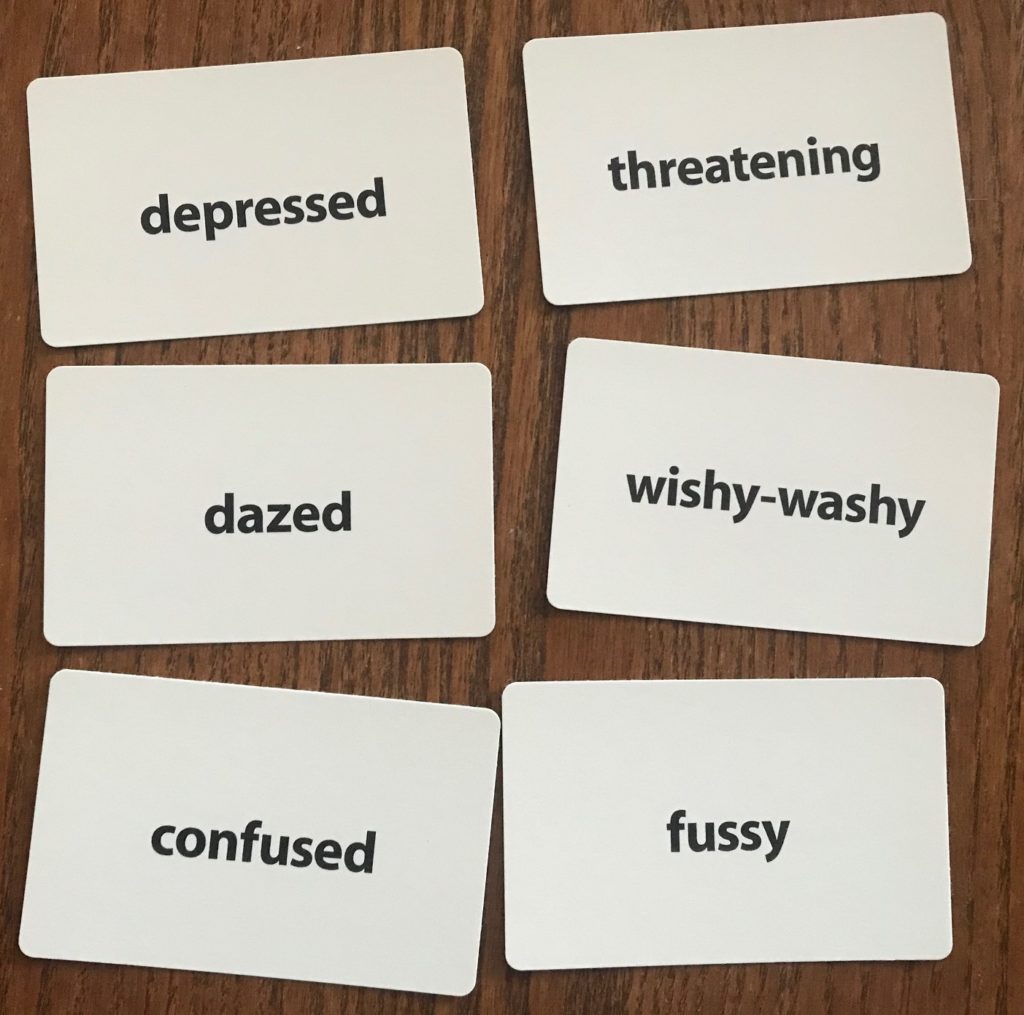
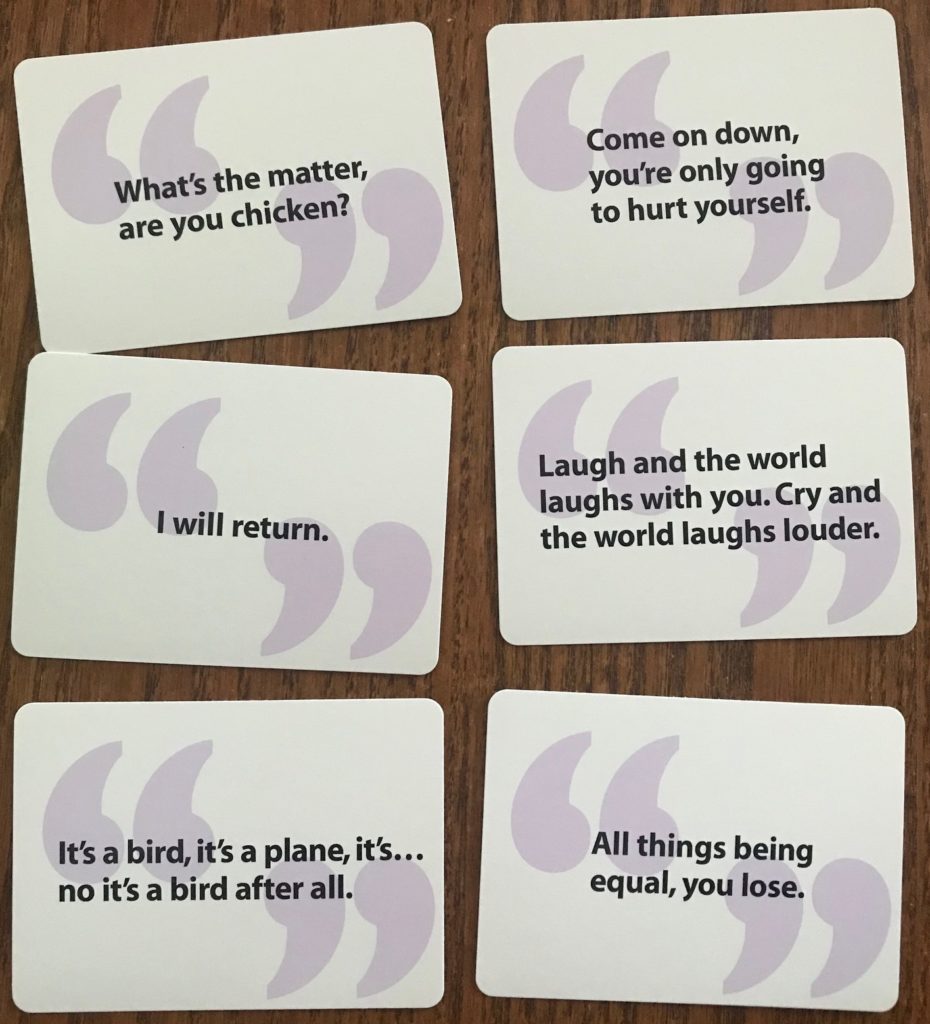
The final part of the round is to replace every Mood Card that had any vote on it with a new Mood Card. Then the next player starts over with a new die roll. The first player to the Finish space wins moods!
how it went
Our game group played moods back in November of 2019 (omigosh!) so we played with 4 people, but I think this game would scale nicely to 8 to maximize party game fun. But we had plenty of fun, although this game is not without its challenges.
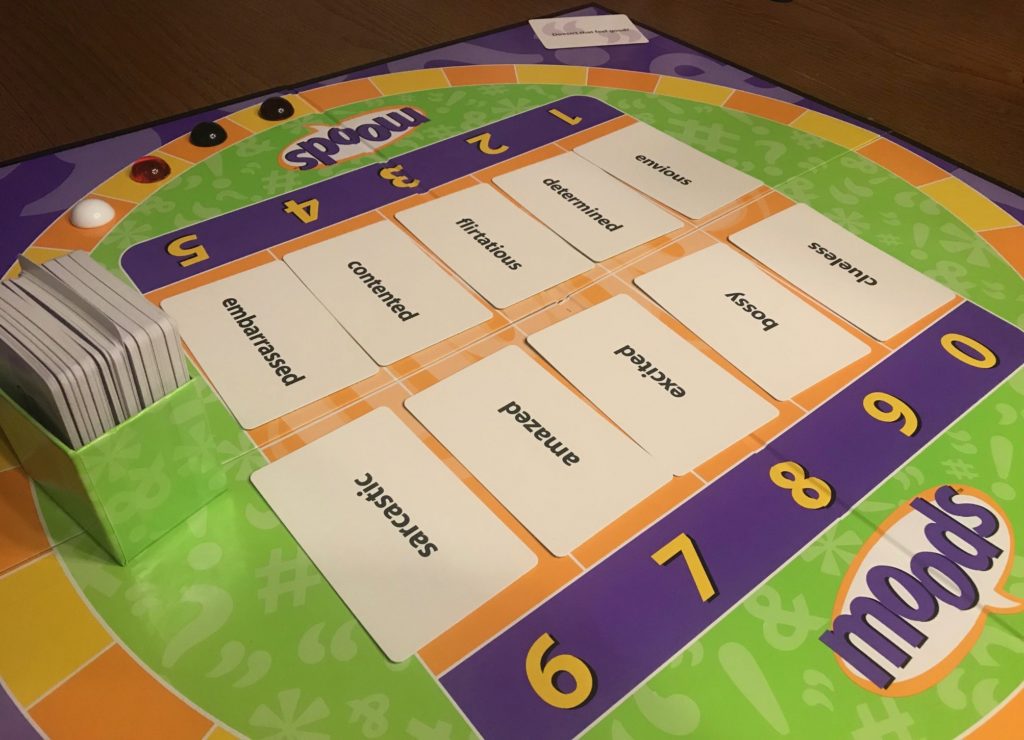
Challenge #1: After rolling the die, you have to be able to see the mood without giving away which number / mood you are looking for. This is by no means an insurmountable challenge, but it’s worth mentioning as I think this challenge becomes amplified in the casual atmosphere of a party game. This is not a bluffing game, but it requires bluffing skills just to determine which mood you are supposed to do if someone is looking at you. There must be a better way.
Challenge #2: Moods has all the inherent challenges of any performative game. Generally you want to be a caricature to get the mood across, but overdoing it might make the voting too simple? And subtlety could ruin everything. So you want to hit that sweet spot. Plus some members of your game group might just plain not enjoy this type of game, at least on their turn.
Challenge #3: Kind of opposite of the above, some of the mood cards are maybe too similar which makes the vote a crapshoot. When I pulled a few cards at random to take example photos I got both Dazed and Confused. I can think of ways I would try to differentiate them in my speaking but I’m not sure the difference would be clear. Not the end of the world, but less gamely.

But honestly I am working pretty hard to bring up challenging nuances about what is just a plain, fun party game. The game doesn’t take itself too seriously, and if the players do not either then fun is sure to be had. And I had fun too, right up until Keri won moods!
FUN FACT: I hate playing the game Utter Nonsense passionately. I enjoy watching people play, but my own gift of accents is somehow worse than no talent. I have a talent for doing very poorly which is very hilarious to some people in my life. The general dynamic in my household is that I am always trying to get games into the house while Bill is always trying to get games out of the house. But every time I try to donate Utter Nonsense, it makes its way back onto the shelves quietly and ominously.
play or pass
Play. We are party game people, and you can’t go wrong with this type of simple, ridiculous gameplay. Good group fun. Knowledge of moods a must.

